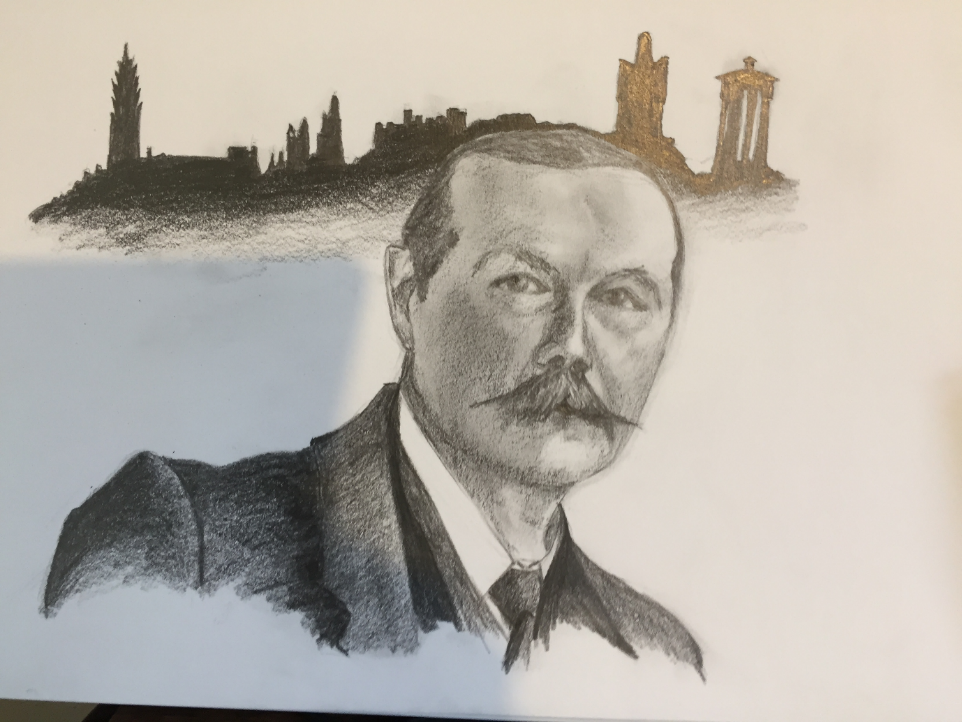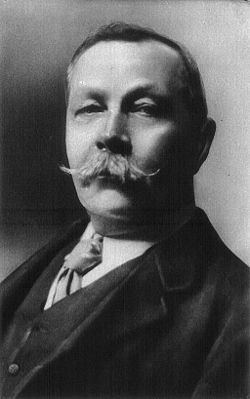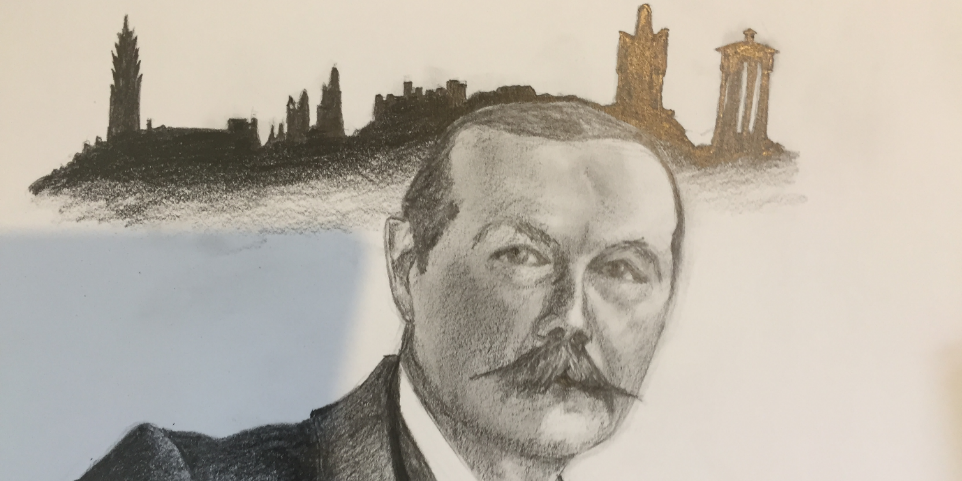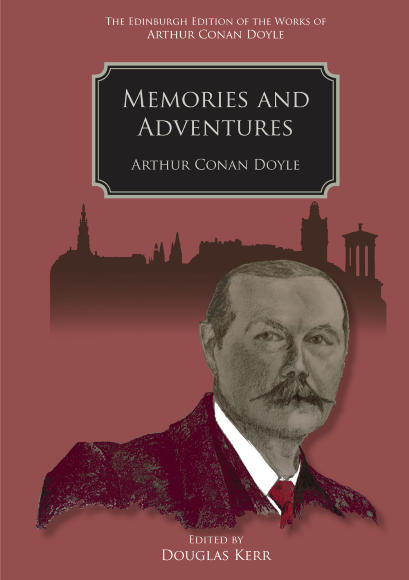
by Douglas Kerr

There are dozens of biographies of Arthur Conan Doyle, the creator of Sherlock Holmes and one of the most popular storytellers in English. But his own account of his life, Memories and Adventures, published in 1924, is not very well known. Biographers can give you all the facts, but the kind of life-writing called autobiography gives you something unique. It shows you what the author saw when he looked in the mirror.
A Man of Action
Conan Doyle was a man of action as well as a creative writer. Besides his busy career in literature, he had been active in medicine, sport, journalism, politics, travel, campaigns against injustice, Spiritualism, and psychic research. As a student, he served as ship’s doctor on a whaling vessel in Arctic waters. As a young man, he played in goal for Portsmouth FC. An accomplished cricketer, his proudest moment was when he bowled out the legendary W. G. Grace. He reported for newspapers on three wars, and twice stood for parliament. And he was intensely sociable. His autobiography drops the names of hundreds of distinguished contemporaries, in the arts and theatre, politics, science, and public life. He was friends with Oscar Wilde and Lord Kitchener, Prime Minister Arthur Balfour and President Theodore Roosevelt.
Memories and Adventures tells the story, but it also interprets it. Students of life-writing learn to pay attention not only to the events of a life-story, but also to its structure. How does it begin and end? How are its different parts connected? Does it follow a simple linear structure, or move backwards and forwards in time? How much weight is given to different episodes?
Beginnings and Endings
The beginning and ending of Memories and Adventures both give us information about how Conan Doyle saw himself. In the first chapter, there is a good deal about his family’s antecedents. He writes about his father’s family’s, who were artists and illustrators, and their place in the cultural life of nineteenth-century London. On his mother’s side, he proudly traces an ancestry that goes back to the Percy family of Northumberland, and ‘with that illustrious line up to three separate marriages with the Plantagenets’. These royal connections may well have been a snobbish fantasy of his mother’s, who came from fairly modest Irish stock. But they took a grip on the imagination of her son, who would grow up to have success with his historical novels.
One aspect of Conan Doyle’s background is entirely missing from the story. His father was an alcoholic, probably abusive at home, and spent his last decades in a series of institutions. At that time alcoholism was considered a kind of insanity, and Conan Doyle’s life-story makes no mention of this sad tale, which he must have considered both shameful and private. So his life-writing does not just show what he saw in the mirror. It is also the story he wants you to see.

Conan Doyle’s Spiritualism
The ending of the book is just as interesting. Conan Doyle was a Spiritualist, a believer in the possibility of communicating with the dead. The last dozen years of his life were spent in tireless travels, lecturing and spreading the gospel of Spiritualism. His final chapter was titled ‘The Psychic Quest’, and tells of his psychic and spiritual adventures, while making out a strong case for Spiritualism. This was the version published in 1924. But when he came to revise the book for a second edition, that chapter has disappeared, and is replaced by a humdrum updating of his travels and publications since the first edition was published. Why does he delete the arguments and proofs of Spiritualism in the second edition? It is a mystery. He certainly had not lost his Spiritualist faith.
For all his busy adventures and his fascinating spiritual life, it is as a writer that we remember Conan Doyle. There is of course plenty in Memories and Adventures about his literary life, his early struggles to make it as an author while he was still a family doctor, the extraordinary success of the Sherlock Holmes tales, his lecture tours, his theatrical ventures, and so on. But here too, the structures of life-writing may have something to tell us. The book has one whole chapter about Sherlock Holmes, just as it has one chapter about schooldays, one about sport, one about his political career, and so on. But it has nine chapters about his adventures as an observer of Britain’s wars – in the Sudan, South Africa, and in the First World War. We may think of him as a writer of stories, and creator of one of the most famous of all literary characters. But from the evidence of his own life-writing, he saw himself above everything as a man of action.

About the Author
Douglas Kerr is Honorary Research Fellow at Birkbeck, University of London, and a former Professor of English at Hong Kong University. He has published books on Wilfred Owen, George Orwell, and Conan Doyle, and is general editor of the Edinburgh Edition of the Works of Arthur Conan Doyle.
About the Book
The Edinburgh Edition of the Works of Arthur Conan Doyle serves Conan Doyle’s growing reputation as a significant force in the literature of Scotland, the English language and the world. For the first time, the volume provides students, enthusiasts and researchers with everything needed for a serious appreciation of Memories and Adventures, the autobiography of Conan Doyle’s life in literature, medicine, travel, politics, war, sport and spiritualism.






